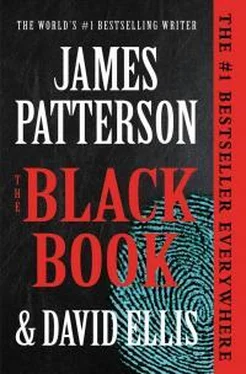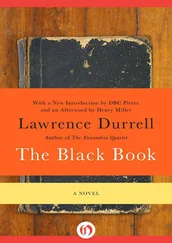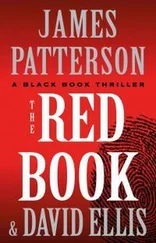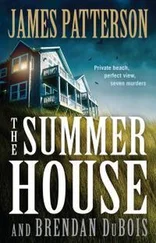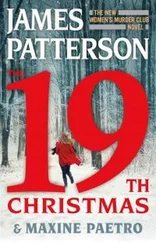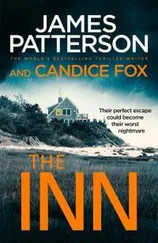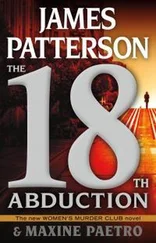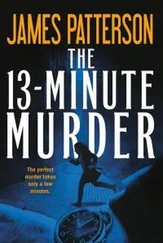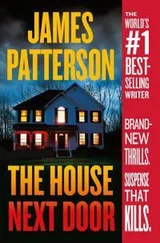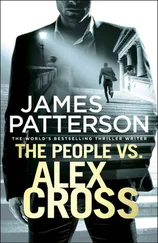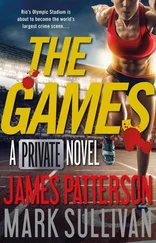I walk up to the witness stand, my legs wobbly, my body trembling.
But my mind, for the first time in a very long time, is clear as day.
“Do you solemnly swear to tell the truth, the whole truth, and nothing but the truth, so help you God?”
I do. I will tell the truth.
I will testify, truthfully, that I didn’t remember anything about what happened in the bedroom with Kate and Amy.
And then I will testify, truthfully, that I remember now.
It all came back. It all came back when I heard my back door creak open, when I listened to a man sneak up the stairs and tiptoe down the hallway to kill me. The chaos, the terror, the adrenaline—it didn’t just unlock the door in my brain. It barreled through it, ripping it from its hinges.
I remember everything.
“Mr. Harney,” says Stilson. “You stand accused of killing four people.”
“Yes.”
“Mr. Harney, did you kill those four people?”
“No,” I say. “I didn’t kill Ramona Dillavou. I didn’t kill Joe Washington. I didn’t kill Kate. And I didn’t kill Amy.”
I look at Patti, sitting in the front row, straight as an arrow, holding her breath.
This is not going to be easy for her.
“I didn’t kill those people,” I say. “But I know who did.”
Past and Present
Ninety-Five
The Present
STILSON TOMITA flips through his notes, trying to keep up with me. It’s not his fault. He didn’t know what I was going to say today. Hell, I didn’t know what I was going to say today until a few hours ago, when it all came rushing back.
The jurors, even after a full morning of testimony in which I recounted every detail leading up to the murders, are listening with rapt attention, leaning forward, eyes narrowed.
As is everyone else. The media, furiously taking notes and typing on their phones, tweeting out revelations drip by drip. My sister, wound tight, looking as if she hasn’t taken a breath for three hours.
“So someone left a photograph on your doorstep of Amy Lentini walking up the steps to the brownstone,” says Stilson, repeating the last thing I said. This is the best he can do to keep this in Q-and-A format as opposed to just letting me talk nonstop for hours on end. “So what happened next?”
“Well, after I saw that photo—which had the same angle, the same positioning, the same everything as the photos Kim Beans had been publishing every week in her online column—it seemed clear to me that it was taken by the same person who was slipping Kim those photographs.”
“So what did you do?”
“I confronted Amy. I asked her what the heck was going on.”
“And…what did she say?” asks Stilson, as curious as the jury.
“She told me about the investigation,” I say. “She finally told me that the state’s attorney’s office was investigating the possibility that the brownstone was making payoffs to Chicago cops for protection. And whoever had left that photo of Amy at my doorstep was probably the same person who had been slipping the photographs to Kim Beans for her weekly column.”
“So—”
“But I asked myself, who would leak those photographs to a reporter? And then I finally realized why someone would do that.”
“When…when did you realize that?”
“When Margaret Olson announced her candidacy for mayor.”
Maximum Margaret, posture already erect, seems to steel herself all the more. Hands flat on the table, about to rise and object. Behind her the spectators buzz, low mumbles of surprise. The sheriff’s deputy barks out a call for order in the courtroom.
“Congressman Tedesco was the presumed front-runner for the mayoral job,” I say. “He had a lot of money and everyone’s support. It would’ve been his job for the taking. And suddenly he drops out and endorses the state’s attorney? I mean, c’mon.”
“Your Honor, object to relevance and speculation,” says Margaret Olson.
Stilson, bless his heart, does his best, even though he’s winging it. “He’s explaining the course of his investigation, Judge. He’s not saying it was true.”
“Yes, I am,” I say.
The judge—and Stilson—glare at me.
“The testimony is permissible as far as it relates to what the defendant suspected and how it affected his investigation,” says the judge, a brittle old guy named Bradford Beatty. “It is not to be considered something the defendant knew for a fact. And Mr. Tomita,” the judge adds, wagging a finger, “assert some control here or I will. Even a defendant testifying to his theory of innocence has his limits.”
“Anyway,” I say, “that’s what I was thinking. That the state’s attorney was using these photos to blackmail Congressman Tedesco. She had a photo of him. Because the congressman was a client of the brownstone brothel.”
“Okay,” says Stilson. “So what—”
“So I tailed the reporter, Kim Beans, in order to discover her source. For three days I stayed on her. I even saw her wait for several hours at a restaurant, the Twisted Spoke, where it sure seemed like she was waiting for someone. But nothing came of it. The source never showed.” I nod my head. “The source knew I was tailing Kim. Someone had tipped off the source. But that didn’t make sense to me. The only person in the world who knew I was tailing Kim, besides me, was Amy.”
Stilson’s chin rises. “Okay. So what hap—”
“So naturally, that made me suspicious of Amy,” I continue. “Because Amy was a top aide to Margaret Olson. She was her number two. Amy had sworn to me up and down that Margaret Olson had no designs on the mayoral job. And then suddenly I’m watching the state’s attorney announcing her candidacy for mayor. I…I didn’t know what to think.”
Stilson nods, waits to see if I have anything else to say. Lawyers like to prepare well in advance, rehearse and rerehearse, for testimony like this. Stilson doesn’t have the slightest idea what will come next. He’s been relegated to asking the basic What happened next? question so many times that the jurors could ask it for him.
“So what happened next, Billy?”
“That day, the day that Margaret Olson announced her candidacy for mayor, nothing happened,” I say. “I was just in a fog. I didn’t know whom to trust, whom to believe, whom to suspect.”
I nod to Stilson to indicate I’m done, a little signal we seem to have informally worked out.
“What about the next day?”
Stilson, and presumably the jurors, know that the next day was the day that Amy and Kate were murdered.
“The next day,” I say, “Amy called me and asked me to come to her apartment.”
Ninety-Six
The Past
I DROVE to Amy’s condo, the traffic heavy, talk radio breathlessly discussing the new revelation in the Chicago mayoral race. Congressman Tedesco had bowed out. State’s attorney Margaret Olson was now the front-runner.
The announcement had been made yesterday, and it had thrown me just as it had thrown the media, but for different reasons. I’d wanted so badly to confront Amy about it. But I hadn’t reached out to her, not yesterday—I needed time to process it. She’d promised me that Margaret had no desire to run. And suddenly she was running—with Tedesco’s blessing, with his endorsement.
It all pointed to Amy and Margaret from the beginning. The reason they were so sensitive about the little black book. The reason that somebody had been slipping Kim Beans those photographs of the brothel’s clientele. It had been a veiled warning to Congressman Tedesco that his photograph could be next if he didn’t behave like a good little boy.
And if it was true, it was brilliant. They’d taken down the mayor and blackmailed his would-be replacement so that Margaret could have the job all to herself.
Читать дальше
